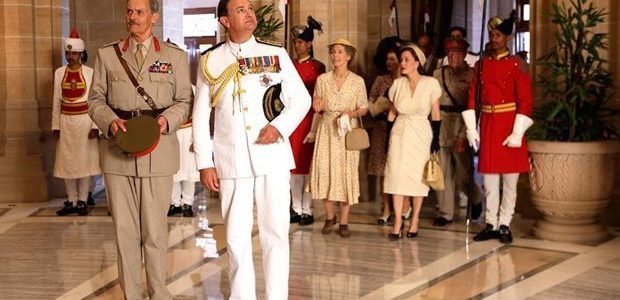
ReelBob: ‘Viceroy’s House’ ★★½
By Bob Bloom
For director Gurinder Chadha, the partition of India and Pakistan is personal.
So, it is sad that her passion project is compromised by a story saddled with a clichéd star-crossed love story that is unworthy of a political solution that ultimately cost about 1 million lives.
“Viceroy’s House” follows Lord Mountbatten (Hugh Bonneville) who, in 1947, is dispatched by the British government with his wife, Edwina (Gillian Anderson) and daughter to India, where he will serve as that colony’s last viceroy as he oversees its transition to an independent nation.
Mountbatten hopes for a peaceful transfer of power, but soon discovers that centuries of cultural and religious differences — many of which were purposely sowed by the British to secure their rule — has created a political climate that eventually will tear British India apart.
If Chadha, who co-wrote the screenplay with Paul Mayeda Berges and Moira Buffini, had kept the film’s focus on the difficult task facing Mountbatten, then “Viceroy House” would have been a much more impressive undertaking.
Instead, she adds a subplot about a young couple — a Hindu man and Muslim woman — who work in the Viceroy’s House and fall in love despite their differences — even as their nation-to-be is experiencing an upheaval in which neighbor turns against neighbor because of religious differences.
A prologue to the movie tells us that “History is written by the victors,” but it seems the only ultimate winner is Great Britain whose government is using the sincere Mountbatten to achieve a preordained outcome that will be advantageous to British interests.
As Mountbatten meets with the Hindu and Muslim leaders of India, he soon realizes that their agendas differ.
The Muslim minority wants its own nation, fearing they will become, as Muslim leader Muhammed Ali Jinnah (a cold and pragmatic Denzil Smith), says, like the “Negroes in America.”
Mountbatten, with backing from Mahatma Gandhi, works feverishly to convince all parties that a united India is practical, but their differences are too deep.
Reluctantly, Mountbatten agrees to a partition, thus creating a Muslim-led Pakistan and a Hindu-led India.
This incites more rioting and bloodshed, as passions — and rancor — continually rise.
This feverish undercurrent of distrust and outright hatred reaches into the home of the viceroy where Hindu and Muslim staff members begin to fight among themselves.
And it also separates the young lovers. Here, though, is where the film falls flat. Instead of keeping them apart, a rather cynical and stereotypical Hollywood conclusion mars most of what came before, diluting the righteous anger that should have permeated the movie like thick smoke.
“Viceroy’s House” is an interesting historical drama, especially when it focuses on the Mountbattens and their growing attachment to India.
If only Chadha would have had the same fondness for her project, it would most likely had been a much better feature.
I am a member of the Indiana Film Journalists Association. My reviews appear at ReelBob (reelbob.com) and Rottentomatoes (www.rottentomatoes.com). I also review Blu-rays and DVDs. I can be reached by email at bobbloomjc@gmail.com or on Twitter @ReelBobBloom. Links to my reviews can be found on Facebook, Twitter, Google+ and LinkedIn.
VICEROY’S HOUSE
2½ stars out of 4
Not rated, violence